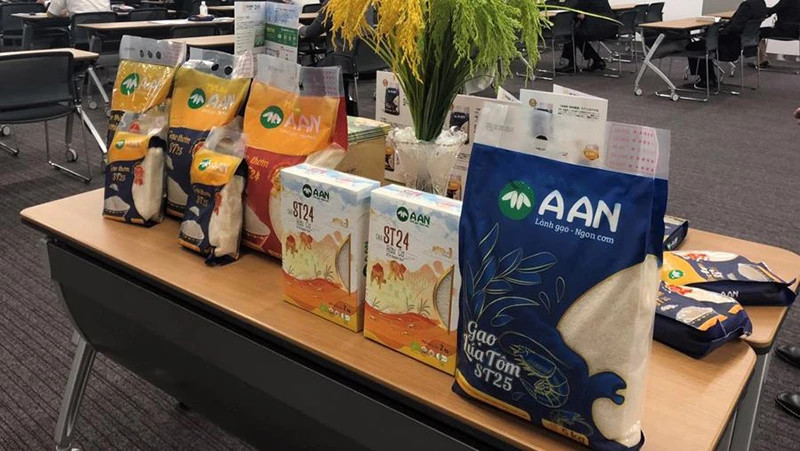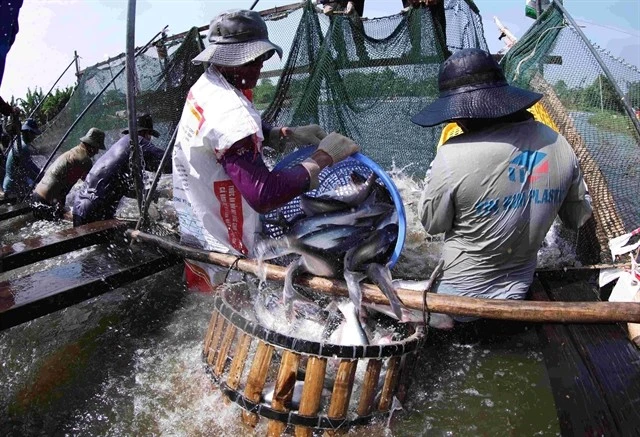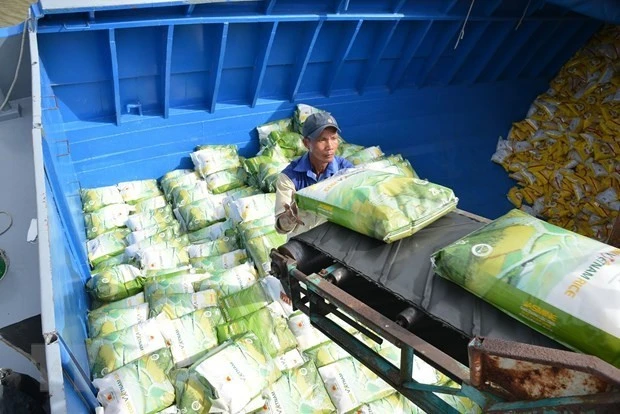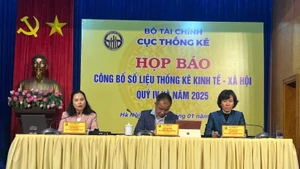Vietnamese rice opens new markets
Recognising that Vietnam is one of the top five rice suppliers to Canada, KD Trading Kevin Le has recently made efforts to introduce ST25 rice into the Canadian market. So far, KD Trading Kevin Le has reached an agreement to become the importer of this product in Canada.
Importing ST25 rice from Vietnam into Canada is not easy. Therefore, KD Trading Kevin Le has conducted thorough market surveys. They also identified that the current Canadian market has many different types of rice, so the company must have specific and long-term competitive strategies to ensure that ST25 rice is accepted.
By fully leveraging the reputation of ST25 rice, which has won the title of the world's best rice twice in 2019 and 2023, KD Trading Kevin Le is confident about bringing Vietnamese rice into a country known for its high standards.
The success of an overseas Vietnamese business in reaching an agreement to export rice to Canada continues to add to the joy of Vietnamese rice exports. Although Canada is not yet a large market for Vietnamese rice, its high standards mean that success in this market could open doors to many others.
According to the General Department of Customs, Vietnam's rice exports reached 6.9 million tonnes in the first nine months of 2024, with a revenue of 4.3 billion USD, representing a growth rate of 23% compared to the same period in 2023. Rice exports remain a bright spot in the economic picture.
However, upon closer inspection, it can be seen that after rice exports exceeded 1 million tonnes per month in March and April, they have recently stagnated at around 800,000 tonnes per month. During the first nine months of 2024, the country's rice exports reached 6.96 million tonnes, an increase of 8.4% year-on-year, with a value of 4.35 billion USD, up 23%.
Additionally, on October 23, the state-owned company of the Indonesian government, Perusahaan Umum (Perum), authorised by Bulog, announced the cancellation of its rice import tender in 2024.
This is the ninth time in 2024 that Bulog has invited tenders for international rice imports, but this time it was cancelled. Accordingly, Indonesia's Bulog agency has adjusted the contents of the international tender announcement, aiming to invite India to participate instead of limiting rice purchases to Thailand, Vietnam, Cambodia, and Pakistan, as in previous tenders.
Meanwhile, the US Department of Agriculture has also forecasted that India’s rice exports in 2025 will increase by 3 million tonnes, reaching 21 million tonnes, while rice exports from Brazil, Pakistan, Thailand, and Vietnam are expected to decrease.
Additionally, exports to China over the past nine months have reached only 241,000 tonnes, a sharp drop of 72% compared to last year. For many years, China has been one of Vietnam’s largest rice markets, so a reduction in China’s rice imports from Vietnam will inevitably impact Vietnam’s rice export activities.
Furthermore, Tran Thanh Hai, Deputy Director of the Import and Export Department under the Ministry of Industry and Trade, reported that India has recently lifted its rice export ban. As the world’s leading rice exporter, India’s move will undoubtedly affect Vietnam’s rice export prices. Currently, businesses and associations are closely monitoring this development to remain proactive.
Opportunities towards year-end
India’s recent easing of its rice export restrictions has raised concerns about potential impacts on Vietnamese rice businesses. However, experts point out that the "key" to overcoming these challenges lies in the "fruits" of Vietnam’s shift towards high-quality and fragrant rice production, a transformation that ministries, sectors, and enterprises have accelerated in recent times.
Accordingly, Vietnam’s agriculture sector has been pursuing the production of high-quality and special rice varieties, including fragrant rice. This strategy diversifies Vietnam’s rice products, distinguishing them from India’s exported varieties and reducing the likelihood of adverse effects.
Currently, premium and fragrant rice make up approximately 50% of Vietnam’s rice export segment. This focus on quality over quantity has been a longstanding goal within Vietnam’s rice industry, intended to increase the value of its exports.
For instance, in mid-October, over 1,000 tonnes of high-quality rice were exported to Japan at about 800 USD per tonne. Although this is a high-priced variety, the company successfully exported it by partnering with cooperatives and farmers’ households to ensure consistently high-quality products.
According to Tan Long Group, while some export rice prices have declined due to India's relaxation of its export ban, the drop mainly affects low-grade rice. Mid-range and premium rice varieties, including fragrant rice, haven’t seen a significant impact, as they cater to difficult markets and those requiring higher quality.
Assessing year-end rice export prospects, agricultural expert Hoang Trong Thuy remains optimistic, stating that rice exports will continue to be a bright spot in the economy. He emphasised the importance for businesses to stay closely attuned to market trends and consumer shifts to find niche markets.
“With its reputation, I believe that Vietnamese rice will continue to attract buyers”, said expert Hoang Trong Thuy.
















